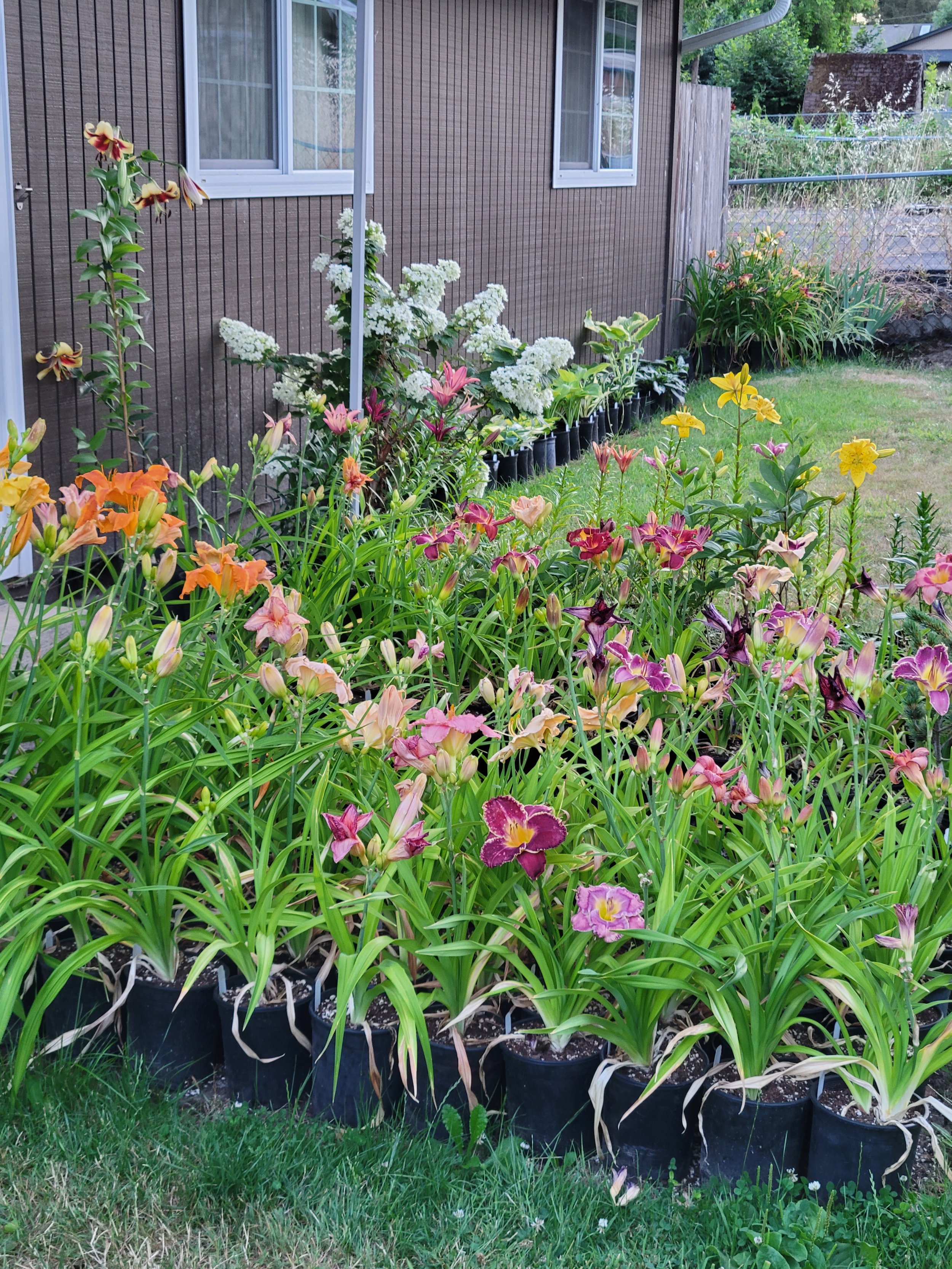

About Hemerocallis (Daylilies). Please visit the Shop page for this season’s offerings and the Contact page to inquire about availability of specific varieties.
Next to Iris, daylilies are some of the hardiest and least demanding perennial garden plants out there. They thrive in full sun (six hours or longer per day), average garden soil, tolerate drought relatively well after they’re established, and they don’t require intensive ongoing maintenance through the growing season. Just remove spent flowers to keep things looking fresh and remove yellowing/dead leaves.
The common name derives from the fact that each individual flower opens for one day. This perceived shortcoming is balanced by scapes (bloom stems) carrying upwards of 20 buds each on some varieties. Colors and patterns can be as simple or as complex as the gardener wishes, with varieties to suit virtually any taste.
Bloom season normally runs from late spring through mid summer, overlapping in some years with the last of the late Iris varieties. Some varieties will indulge the gardener with a second bloom flush, which usually appears as the last of the first flush fades. Not all varieties do this, and life in containers seems to put a damper on this phenomenon, so I have not tested which varieties do and which do not rebloom.
In the description of each variety in the shop, there’s a notation of Dormant, Semi-evergreen, or Evergreen. This refers to how the plant spends its winters. Dormant varieties essentially die back to the groundline for the winter months. Semi-evergreen varieties will show some green above the groundline, though harsher winter weather will have a profound effect on just how much. Evergreen varieties are pretty much just that…they might partially die back and outer leaves might yellow, but it’s still more green than brown. Bear in mind, though, in the much colder regions of the country, all daylilies might opt for full dormancy in areas that regularly spend time at temperatures significantly below freezing.
The selection of daylilies I grow is not quite as broad as that of the Iris. I’m building stocks back up, but 2022 and 2023 were uncommonly rough on them, and propagation has been slow. As with Iris, there are a few newer varieties that may have one or two individuals available, but are not plentiful enough just yet to warrant listing them in the shop. Similar to Siberian Iris, the plants need to be kept slightly moist when they’re shipped, so they get bagged with a fresh sprinkling of the bagged potting mix I use after they’re de-potted and cleaned up, and then shipped via USPS Priority Mail flat rate box, the same way the Iris are. Iris and Hemerocallis ship separately, since they ship at different times.
To peruse the selection of Hemerocallis varieties, please stop by the Shop page.
Shipping of Hemerocallis will commence in March and run through May, or when supply is depleted, whichever occurs first. Getting them established earlier will lead to stronger plants when things wind down at the end of the season, rather than waiting for the end of the season to ship and plant them. Last, while plants shipped are large enough to bloom, and often do, bloom the first season following planting cannot be guaranteed.
Any questions on variety selection or availability, feel free to inquire via the Contact link.
Thanks for reading!
